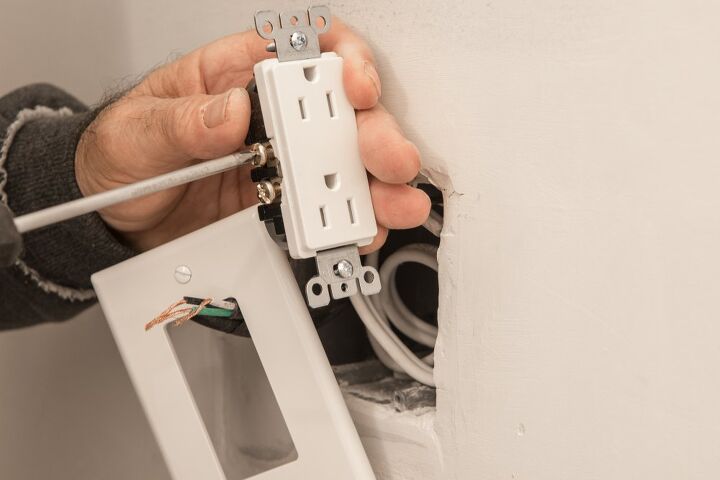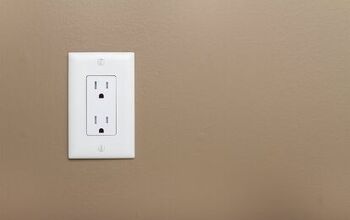What Is A Tamper-Resistant Receptacle? (Find Out Now!)

When you first have kids or get a new pet, one of the things that you need to do is consider baby-proofing your home. There are a lot of hazards in and around your home that you may need to watch out for. For example, almost everything electronic can be hazardous to young kids. That’s why people are told to get tamper-resistant receptacles. But, what on earth is a tamper-resistant receptacle supposed to be?
A tamper-resistant receptacle, also known as a tamper-resistant electrical outlet, is a specialty type of electrical outlet. This is a receptacle that is meant to help prevent tampering from children that stick items into the electrical outlet. It’s a way to prevent electrocution and shock.
Understanding how using tamper-resistant outlets is a must if you want to make sure to keep your child safe and alive. Thankfully, we are going to go through each of the most important questions that come into play here.
Do You Need to Hire an Electrician?
Get free, zero-commitment quotes from pro contractors near you.

What Is A Tamper-Resistant Outlet?
A tamper-resistant outlet, TRR, or tamper-resistant receptacle is a specialty outlet that comes with built-in slats that prevent the insertion of foreign objects into the outlet. This is called a safety shutter system. The shutter system that’s built into a tamper-resistant outlet ensures that things like sticks or forks won’t actually be able to enter the electrified portion of the outlet. Ergo, you can’t really mess with the sockets as much as you would a traditional electrical receptacle.
Tamper-resistant outlets are a basic part of baby-proofing a home. These help avoid mistakes that children (and some really weird pets) tend to make when around outlets. When foreign objects are stuck in a TRR, the shutters block the items from being able to enter in the area that has electricity. This ensures that they don’t conduct electricity, which in turn, could shock the person shoving stuff in the outlet.
Find out how to remove the electric meter tamper tag.
What Kind Of Injuries Do TRRs Prevent?
TRRs are known for being able to prevent shocks and electrocution. However, they also have an additional perk. When most foreign items get shoved in an electrical outlet, there’s a good chance that they could catch fire from the heat that the outlet provides. Electrical fires are some of the most dangerous house fires out there.
Since electrical house fires are unable to be put out with water, they tend to be far deadlier. Needless to say, we want to point out that tamper-resistant outlets are also excellent for preventing fire-related injuries and deaths in their own way.
What Does A Tamper-Resistant Receptacle Look Like?
Though you might expect it to look different than a typical electrical outlet box, the truth is that you won’t notice much of a difference. Sometimes, you might notice that the slots are more geared towards plugs of different sizes, but that’s not a rule by any means of the word. They basically look identical.
Some models will have the letters “TRR” on the front of them. This is to help ensure that buyers know whether they have a tamper-resistant model or not.
How Common Are Tamper-Resistant Receptacles?
Honestly, you are way more likely to see tamper-resistant receptacles in a home than not these days. According to the National Electric Code, TRRs are the mandatory type of electrical outlet for all home kitchens and professional settings. It’s been this way since 2008, so unless you are in an older home, you should expect to see these installed throughout the house you’re in.
Important Safety Note About Tamper-Resistant Receptacles
Though TRRs are meant to improve the overall safety of your home, the truth is that you still need to know how to use them safely. No electrical receptacle is going to be entirely foolproof. Here’s how to use your tamper-resistant receptacle as safely as possible:
- Make sure that the TRR is properly installed. Proper receptacle installation means you won’t have loose wires or frayed items hanging off the receptacle. While installing a tamper-resistant receptacle is generally an easy thing to do, it’s still important not to cut corners.
- Do not stick any plugs that have cracks or breaks in a TRR. Actually, you shouldn’t use any plug that is broken in any socket. This is the fastest way to cause a fire in your home.
- Avoid any kind of water near the sockets. Though these outlets are tamper-resistant, they are not water-resistant. This should be a basic bit of common sense, ya know!
- If you have a plug that is bent, then straighten the plug out. The plug’s ends have to be straight in order to push through the shutters safely. Otherwise, they will not be able to make it past the safety shutter system.
- If you are going to have a baby or are worried about a particularly destructive dog, replace all non-TRRs with tamper-resistant outlets. This is considered to be basic baby-proofing. In fact, if you want to make sure that your building is up to code in many jurisdictions, this should be a basic practice as soon as you move in.
How Much Does It Cost To Install A Tamper-Resistant Receptacle?
If nothing else, installing a tamper-resistant receptacle is a cheap and effective way to bolster your home’s safety levels without actually costing an arm and a leg. Most people tend to do this on their own, which means that the price to install a TRR will be relegated to the price of the TRR itself as long as they’re replacing an old outlet.
If you go the DIY route, then the price to install a new tamper-resistant outlet should be $10 to $20 per outlet. People who choose to hire a helper to replace each outlet will have to pay between $25 to $100 per outlet. Many people will have to deal with minimum call wages, which means a single plug could cost as much as $60.
Since this is a project that tends to be done in bulk, the money will add up fast in most cases. We strongly suggest doing this as a DIY project as long as you are willing to pay attention to the details.
Do You Need to Hire an Electrician?
Get free, zero-commitment quotes from pro contractors near you.

Related Questions
Where are tamper-resistant outlets required?
Along with being required in all new and recently-renovated homes, tamper-resistant outlets are also required in all hotels, childcare facilities, gyms, schools, medical buildings, and retail stores. Basically, if there is a chance that kids could reach the outlet in a professional setting, the law requires you to put a TRR in the socket.Moreover, homes are required to have tamper-resistant outlets too. However, the rules here are sticky. They are absolutely required in most family rooms and kitchens. Bathrooms, too, tend to require them. Check local building codes to find the nuances in your current code.
Are there any major exceptions to the mandatory TRR rule?
While there are subtleties to the rules that can vary from place to place, there is one blanket rule that seems to be fairly common. If an electrical outlet is over five feet and a half off the ground, you don’t have to add a tamper-resistant outlet. This is because the assumption is that adults will not stick forks or knives into the socket, which in turn, renders their usage moot.There are several other exceptions, too. You don’t need to add TRRs to luminaires, nor do you have to add them to outlets that are meant for large, heavy appliances. So, don’t worry about the outlet for your fridge. That’s totally fine.
How common are electrical fires in homes?
Around 6.3 percent of all home fires are caused by electrical fires. This leads to about 24,000 fires reported in the United States per year. While these are not the most common types of fires, most experts agree that they are some of the most dangerous. Since safety groups made a point of dropping the risk of electric fires, the number should shrink soon.

Ossiana Tepfenhart is an expert writer, focusing on interior design and general home tips. Writing is her life, and it's what she does best. Her interests include art and real estate investments.
More by Ossiana Tepfenhart















![Standard Dining Room Table Dimensions [for 4, 6, 8, 10 and 12 People]](https://cdn-fastly.upgradedhome.com/media/2023/07/31/9074335/standard-dining-room-table-dimensions-for-4-6-8-10-and-12-people.jpg?size=350x220)











